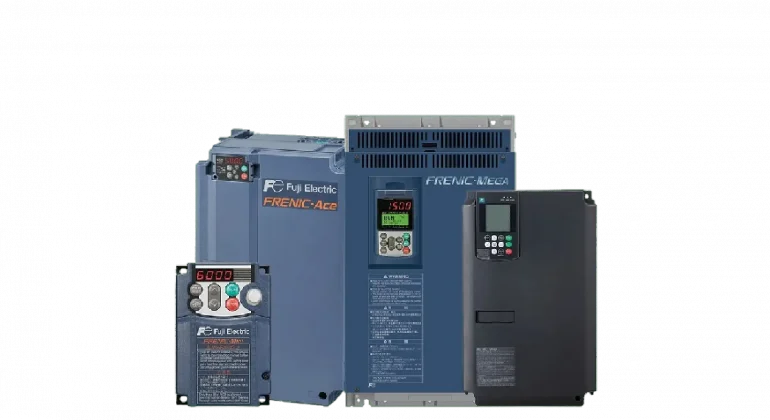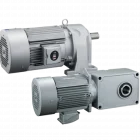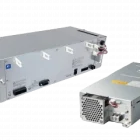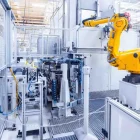Power equipment plays a crucial role in many industries and applications. From powering factories to ensuring a stable electricity supply, it keeps our world running. Let’s break down what you need to know about this essential technology.
Introduction to Power Equipment
Power equipment encompasses a diverse range of tools and systems that generate, distribute, or utilise electrical power. It includes everything from basic power tools to sophisticated industrial machinery. Understanding power equipment is essential for anyone working in manufacturing, construction, energy, and related fields. This knowledge enables professionals to optimize operations, enhance efficiency, and ensure safety.
Power equipment is used in various settings, from residential to industrial. For example, in homes, power equipment may include tools such as electric drills and saws. In industrial settings, it encompasses large machinery, such as generators and motors. The versatility of power equipment makes it indispensable across different sectors.
Power Equipment Components
Fuji Electric offers a variety of components that make up modern power equipment systems. These parts are crucial for ensuring the system operates smoothly and reliably. Here’s a detailed look at some key parts:
Low Voltage Variable Speed Drives (LV VSD)
These control the speed of electric motors. They help save energy and improve performance by allowing motors to run at optimal speeds for different tasks. This is especially helpful when you don’t require a constant speed, such as in pumps or conveyor belts.
Medium Voltage Variable Speed Drives (MV VSD)
Similar to LV VSDs, but designed for higher voltage applications. They are used in larger industrial settings where more power is needed, such as in extensive manufacturing facilities or water treatment plants.
Motors
Change electricity into mechanical energy to power a lot of different things. They are the heart of many industrial processes, from driving machinery to powering HVAC systems.
Servo Systems
They provide precise control of motion, which is often used in robotics and automation. These systems ensure that machines move with high accuracy and speed, which is crucial in applications such as assembly lines or CNC machining.
Uninterruptible Power Supply (UPS)
Provides backup power during outages, preventing data loss and downtime. This is especially important in data centers, hospitals, and other critical infrastructure where continuous operation is essential.
Instrumentation
Measures and monitors various parameters in a system, such as voltage, current, and temperature. This helps operators maintain optimal conditions and detect potential issues early.
PLC (Programmable Logic Controller)
A digital computer that automates physical processes, like controlling machines on assembly lines, amusement parks, or light fixtures. PLCs are highly flexible and can be configured to perform various tasks.
PCS (Power Conditioner System)
Improves the quality of electrical power, protecting sensitive equipment from voltage fluctuations and noise. This is crucial for equipment that requires stable power to function correctly, such as computers and medical devices.
HMI (Human Machine Interface)
A user interface enables operators to monitor and control machinery. HMIs make it easier for operators to run complex systems by providing them with real-time data and intuitive controls.
Oil-Immersed Transformer, Shunt Reactor
Transformers that are used to step up or step down voltage levels. Shunt Reactors are used to stabilize voltage, ensuring a consistent power supply.
Cast Resin Transformer, MOLTRA
Transformers are used in power distribution. They are known for their reliability and durability, making them suitable for demanding applications.
These components work together to create efficient and reliable power systems. Understanding each part is crucial for designing and maintaining systems that meet specific needs.
Power Equipment Systems
Fujielectric.com also provides comprehensive power equipment systems designed for various applications. These systems integrate multiple components to deliver optimized performance. Here are a few examples:
Instrumentation
Comprehensive systems for monitoring and controlling industrial processes. These systems provide real-time data and alerts to ensure that operations run smoothly and safely.
Low Voltage Variable Speed Drives (LV VSD)
Complete drive systems for controlling low-voltage motors. They work well when precise speed control is required, such as in HVAC systems or on conveyor belts.
Medium Voltage Variable Speed Drives (MV VSD)
High-performance drive systems for medium-voltage motor applications. These are used in larger industrial settings where high power is required, such as in extensive manufacturing facilities or water treatment plants.
Applications of Power Equipment
Power equipment finds use in a wide array of industries:
Industrial Automation
Powering robotic arms, conveyor belts, and other automated systems. This makes things more productive and reduces the cost of labor.
Power Generation and Distribution
Generating electricity in power plants and distributing it to homes and businesses. Power equipment ensures that electricity is generated efficiently and delivered reliably.
Manufacturing Processes
Driving machinery used in the production of goods. From textile manufacturing to automotive production, power equipment is crucial for maintaining production lines.
In addition to these industries, power equipment is also used in construction, agriculture, and healthcare. Its versatility makes it a critical component of modern infrastructure.
Pro-Tip: Keep a maintenance log for each piece of equipment. Record every inspection, repair, and replacement. This helps you track performance and identify potential issues before they become significant problems. It also gives us helpful information for planning future maintenance.
Maintenance and Safety
Taking proper care of your equipment keeps it safe and running smoothly. You can keep your equipment in good working condition and avoid breakdowns by regularly inspecting it. Here are some key points to consider:
Importance of Regular Maintenance
Regular maintenance prevents breakdowns and extends the equipment’s lifespan. It also helps identify potential issues early, reducing downtime and repair costs.
Safety Guidelines for Operating Power Equipment
Always follow safety rules and wear the proper gear to protect yourself. Depending on the job, this includes items such as hard hats, gloves, and safety glasses.
Troubleshooting Common Issues
Fewer downtimes mean learning how to find and fix common issues. This might involve checking for loose connections, monitoring temperature levels, or replacing worn parts.
Pro-Tip: Invest in training for your team. Make sure everyone knows how to operate the equipment safely and how to perform basic maintenance tasks. This can significantly reduce accidents and downtime. Additionally, trained personnel can optimize equipment performance, resulting in improved efficiency and productivity.
Investing in training your team in maintenance can also be beneficial. This ensures that everyone knows how to perform routine checks and repairs, reducing reliance on external services.
Frequently Asked Questions
Let’s address some common questions about power equipment to provide you with a clearer understanding.
What are power tools and equipment?
Power tools derive their power from an external source, such as electricity or compressed air. They make tasks easier and faster, improving productivity across various industries.
Who makes DR Power Equipment?
Generac Power Systems makes DR Power Equipment. Generac is known for producing high-quality power equipment, including generators and lawn care tools.
What is a power equipment group?
A power equipment group is a team within an organization responsible for the maintenance, operation, and repair of power equipment. This team ensures that all equipment is running efficiently and safely.
What does a power equipment operator do?
A power equipment operator operates and maintains equipment, such as generators, to ensure they work efficiently and safely. This role requires knowledge of the equipment and adherence to safety protocols.
What does equipment group mean?
“Equipment group” means a collection of related equipment that performs a specific function or is managed as a unit. This could be a set of machines used in a manufacturing process or a group of generators providing backup power.
Conclusion
Power equipment is essential for modern life. Whether it’s powering a factory or keeping the lights on during a storm, it keeps things running. By understanding the components, applications, and maintenance of power equipment, you can ensure reliable and efficient operation.
Keep an eye on future trends in power equipment technology to stay ahead of the curve. As technology continues to improve, new ideas will emerge that make power generation and distribution even more efficient and environmentally friendly.
About Fuji Electric Sales Philippines, Inc.
Supporting industrial development across the Philippines, Fuji Electric Sales Philippines, Inc. manages the promotion, sales, and support of Fuji Electric products. As a subsidiary of Fuji Electric Co., Ltd. from Japan, the company focuses on power electronics, automation, and energy efficiency.
Want to optimize your operations with power equipment? Fuji Electric is here to help!
Rickson Manalo
Assistant Sales Manager
0917-115 6102









